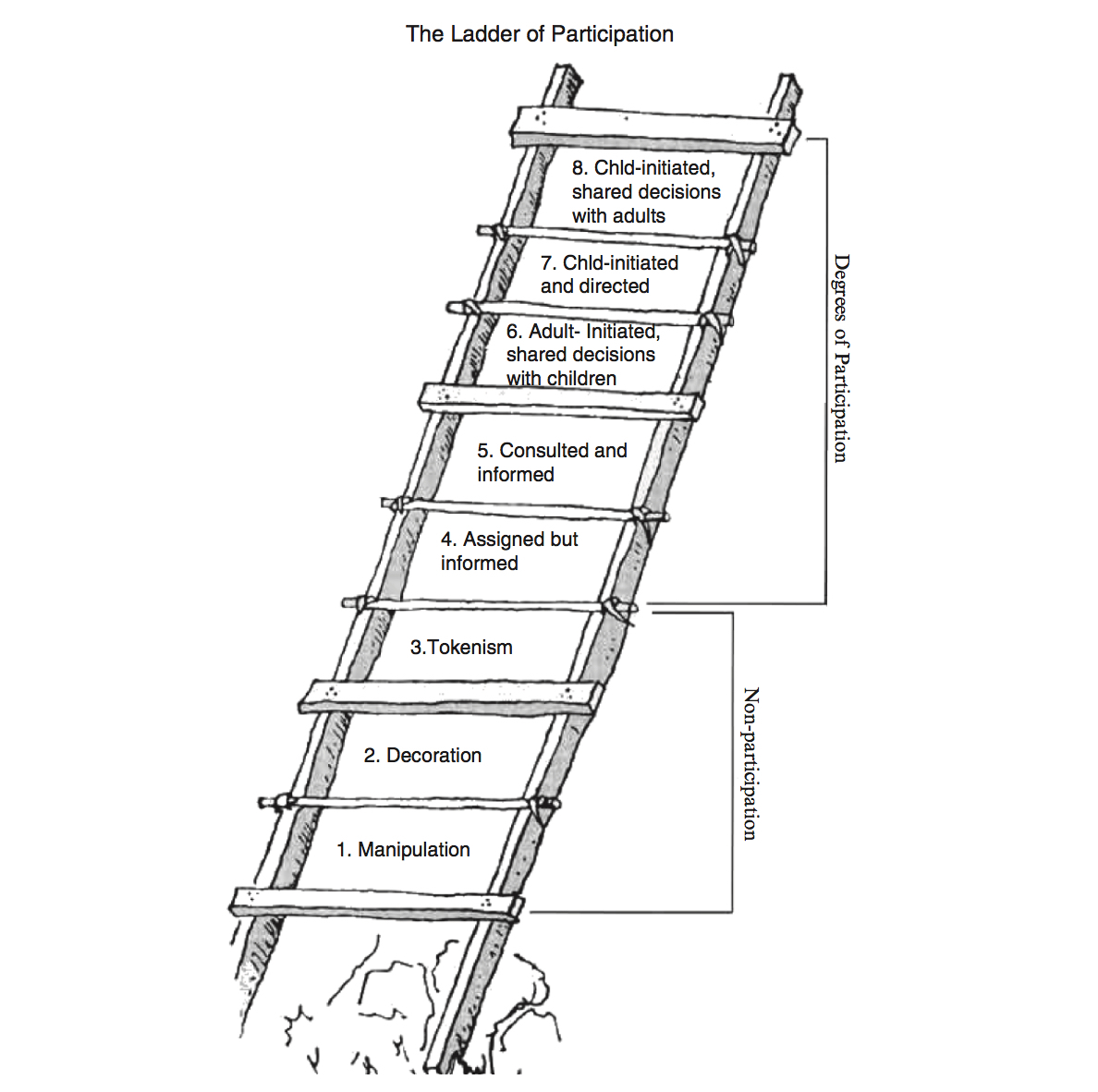
Dr. Restler did a great job in her presentation. Something that has resonated with me was the way she expressed youth should be leaders. The ladder she mentions gave me an expression of where youth find themselves depending on the outcomes of their participation. In society, youth must have the opportunity to tell adults what they think will make their learning environment better or how adults should treat them. In most educational spaces, youth are not able to participate authentically. If youth just wait for adults to be asked to participate or if they do not have a chance to express their opinions on what they think from the material they are learning in school, they find themselves in "Non-Participation" which is the bottom side of the ladder. That side is listed as "Manipulation, Decoration, and Tokenism" where "Youth are being used in projects or youth spaces" (Restler), which I believe they should not be in that spot. They should be on top of the ladder defined as, "Degrees of Participation" where "Youth are given what to do in context" (Restler) and expressing their educators how their own opinions and ideas matter to us. This ladder helps see the kind of person I am. Each student I will get a chance to support in the future matter in this society. The reason they come to school is not just to learn, but to become leaders and see how our educational plans for others and themselves can change. As an educator myself, I do not just want to assign tasks to students or tell them to do something without knowing their great skills. It is important for me to let them speak and take control of each material they are learning to help me see where I am correct/incorrect.
Some questions I would like to ask to Dr. Restler in concerns of the youth participation ladder is: How does this ladder help you see the way youth participate and did it take a lot of practice/research to do this demonstration? Also, where would a college students stand in the ladder and how does it impact you as an adult and the students as youth? This is also something I want to learn more about because I am doing an assignment based on Youth Work is Leading With and how will these ideas you discussed be able to support me as I do the assignment.
One part of the video that confused was Youth In Action. Something I knew about this organization was they do help to support youth in the state to gain better qualities and support in their lives. As mentioned in the video, I learned the youth who are part of the organization, "Share their stories, practice leadership, and create change in their communities" to create better change in their society. I am wondering if Youth In Action can relate to the youth participation ladder. Also, in what way can this relate to Youth being leaders. As mentioned in the video, "Youth In Action doesn't believe that to make youth voices visible, you have to make the adult role invisible", which I do not think is true because adults are seeing how youth participate and how it impacts their way of thinking. It has been hard for me to think about his program can be "Leading With", which is why I want to know how Youth are growing when being part of the YIA team.




Hi Roberto, I always enjoy reading your post! You raise very good questions. I wish we had the oppertunity to go on the YIA fieldtrip this year but I got a mental picture by reading the Pegah's reading. It would be interesting on hearing from a former student from YIA program and see where are they now and hear how the program impacted them.
ReplyDeleteI also wrote in my blog about Hart's Ladder youth participation. unfortunalty there are some programs that the youth are put on the bottom of the ladder especaily in the school systems. Although the school system views the youth one way I believe classrooms can have an impact. As an individual one has a way to make the rules of the classroom, as an educator myself my students had the right to express themselves and made the decisions (even though they were 4 years old) I made sure my students were heard. The daycare center had their own rules but I ran my class differently.